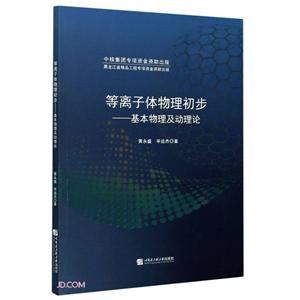
作者:(美) 郑林锦
页数:176
出版社:哈尔滨工业大学出版社
出版日期:2023
ISBN:9787576706888
电子书格式:pdf/epub/txt
内容简介
本书是一部英文版的物理学专著。本书描述了磁的来聚变等离子体的理想磁流体动力学(MHD)理论,为读者提供了高级的主题,尽管如此,它们是独立的,并且可以通过详细的数学处理和基础物理学解释进行研究。书中还给出了解析理论和数值化方案.本书除了探讨了该领城目前的研究发展情况,还讨论了该领战未来的发展前景。第1章简要回顾了受控核聚变的主要概念,并结合其概念的简单性和美丽性讨论它们的前景;第2章描述了理想MHD方程以及它们与已知的新发展的多平行流体磁流休理论的关系;MHD均衡理论在第3章中进行了描述,特别讨论了X点物理学,并指出了其非分析的特征;第4章描述了MHD能量原理,以及它对各种场景的最小化,比如给出了交换和气球模;第5章描述了实空间和复空间中的MHD谱理论,本章还描述了连续模式,准模式、相混合和Alfven共振加热;第6章展示了Tokamak配置(结构)中的MHD稳定性的解析理论,特别是与互换、剥离、气球、环形Alfven和kink-type模式相关的单层理论;第7章描述了内部和外部模式的全局稳定性计算;最后一章是结束语。
作者简介
Linjin Zheng,Dr Linjin Zheng is a theoretical physicist studying controlled thermonuclear fusion plasmas. He received his MSc degree from The University of Science and Technology of China and his PhD from the Institute of Physics-Beijing, Chinese Academy of Sciences. He is currently working at the Institute for Fusion Studies, The University of Texas at Austin. He has published more than one hundred scientific papers, for example in Physical Review Letters, Physics Letters, Nuclear Fusion, Physics of Plasmas, and major conferences. He edited one and authored two books. His research covers ideal/resistive magnetohydrodynamics, and two-fluid and kinetic theories for both equilibrium and stability. His major contributions with his colleagues include the reformulation of gyrokinetic theory, the development of the theoretical interpretation of the so-called edge localized modes, invention of the free boundary ballooning representation, the discoveries of second toroidal Alfven eigenmodes and current interchange tearing modes, etc. He also developed the tokamak equilibrium code ATEQ and stability codes AEGIS and AEGIS-K.
目录
Acknowledgements
Author biography
1 Fusion energy: concepts and prospects
1.1 Nuclear fusion and Lawson’s criterion
1.2 Magnetic confinement
1.2.1 Tokamaks
1.2.2 Stellarators
1.2.3 Rotating theta-pinched mirrors
1.3 Inertial confinement
References
2 Ideal magnetohydrodynamic (MHD) equations and multi-parallel-fluid MHD theory
2.1 Moments of the kinetic equation
2.1.1 Continuity equation
2.1.2 Momentum equation
2.1.3 Energy equation
2.1.4 Entropy equation and adiabatic assumption
2.2 Ideal MHD equations
2.3 Multi-parallel-fluid MHD theory
References
3 Magnetohydrodynamic (MHD) equilibrium
3.1 Flux coordinates for symmetric system
3.2 Grad-Shafranov equation
3.3 Green function and free boundary equilibrium
3.4 Solovev solution and modification
3.5 Local equilibrium near the X-point
3.6 Numerical solution of Grad-Shafranov equation: ATEQ code
3.7 Mirror equilibrium
References
4 Ideal magnetohydrodynamic (MHD) energy principle
4.1 Linear ideal MHD energy principle
4.2 Energy minimization for localized interchange modes
4.3 Energy minimization for high-n modes
4.4 Energy principle for tokamak geometry
4.4.1 Plasma energy
4.4.2 Vacuum energy
4.5 Energy principle in cylinder model
References
5 Magnetohydrodynamic (MHD) mode spectrum in tokamaks
5.1 Singular differential equation in the MHD system
5.2 Alfven continuum theory in the real space
5.3 Continuum theory in the complex space: quasi-lnodes
5.4 Initial value problem: phase mixing
5.5 lnhomogeneous boundary value problem: plasma heating
5.6 Tokamak global MHD spectrum
References
6 Magnetohydrodynamic (MHD) stability theory in tokamaks
6.1 Radially localized modes: Mercier criterion
6.2 External radially localized modes: peeling modes
6.3 Ballooning modes
6.3.1 Ballooning mode representation and equations
6.3.2 Asymptotic behavior
6.3.3 Steep-pressure-gradient equilibrium model
6.4 Toroidal Alfven eigenmodes
6.4.1 TAE theory in the configuration space
6.4.2 TAE theory in the ballooning representation space
6.5 Internal kink type of modes
6.5.1 Configuration space description
6.5.2 Ballooning representation space description
References
7 Global magnetohydrodynamic (MHD) stability computation:internal and external modes
7.1 Internal modes
7.2 External kink modes
7.3 Resistive wall modes
7.3.1 Rotation stabilization
7.4 Error-field amplification
7.5 Alfven modes
References
8 Concluding remarks
References
Appendix A: Derivation of some basic magnetohydrodynamic (MHD) formula
Reference
Appendix B: Acronym list















